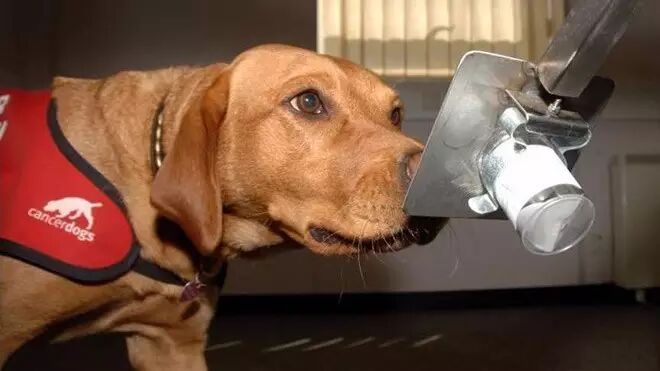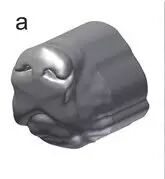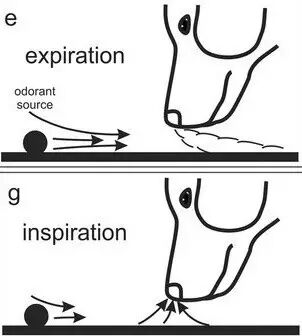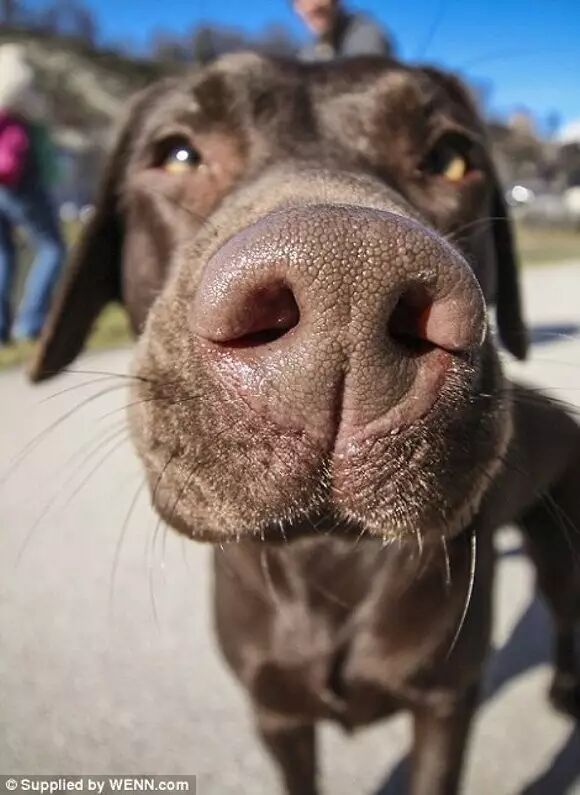Do you remember how dogs smell things? They approach objects, their nostrils constantly flaring, taking short, quick breaths – that’s not just inhaling, they are “sniffing”.

Humans also need to detect gases, such as detecting TNT explosives. Can we learn from dogs’ way of smelling to enhance the “sensitivity” of detectors?
The sensitivity of a dog’s sense of smell is primarily due to its highly developed olfactory system. Another important factor is its nose shape and sniffing action. Matthew Staymates and colleagues from the National Institute of Standards and Technology in Maryland used a 3D-printed model of a dog nose to study the external aerodynamics of canine sniffing. The paper was published in Scientific Reports.
 Model used for 3D printing.
Model used for 3D printing.
 Gas disturbances recorded by the instrument.
Gas disturbances recorded by the instrument.
They found that compared to continuous inhalation, these two factors significantly improve the efficiency of collecting gas molecules while sniffing. The authors also created a gas inlet for explosives detectors that can sniff like a dog based on their findings.

The secret of sniffing lies not only in the inhalation but also in the exhalation phase. In gas flow visualization experiments, the authors discovered that during the exhalation phase of sniffing, the airflow leaving the nose draws vapor-laden air into the nostrils. Compared to continuous inhalation, the gas detection capability of the nose during sniffing increased by 18 times.
Airflow movement during sniffing.Staymates et al.
Based on their findings, the authors designed a custom gas inlet for a commercially available vapor detection system that simulates the aerodynamic principles of a dog’s nose. They found that using the sniffing method improved the ability to detect TNT explosive gases by 16 times compared to continuous air intake (the conventional operation mode of gas detectors).
The authors point out that the knowledge gained from dogs may help develop a new generation of gas sampling instruments for detecting explosives and drugs. Perhaps in the future, you will encounter security personnel holding a brand new gas detector that sniffs your luggage like a dog…

Click “Read the original article” to read the paper
Biomimetic Sniffing Improves the Detection Performance of a 3D Printed Nose of a Dog and a Commercial Trace Vapor Detector
Official WeChat of nature.com
What are the latest developments in the science and technology publishing industry in China and the world?
How to publish papers in Nature and its sub-journals?
What new products and services from Nature Research are suitable for you?
Long press the QR code to follow us.
WeChat ID: macmillan-nature
